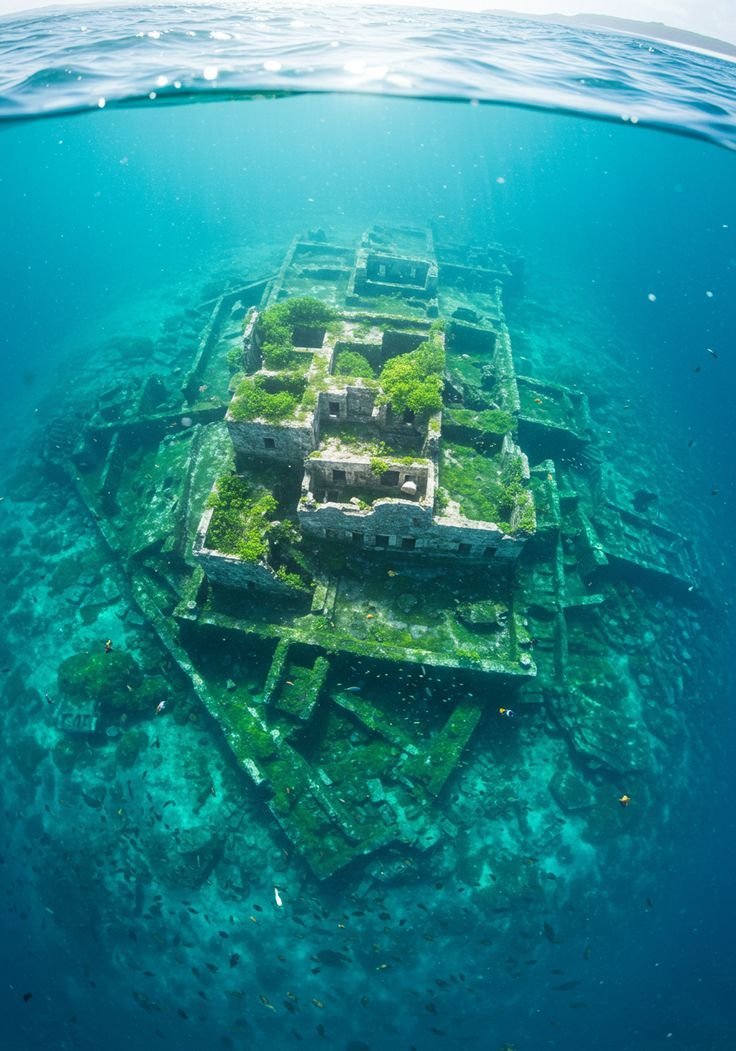Kraken and Giants: Myths That Come Alive in the Ocean
The ocean has always been a place of wonder, mystery, and fear. From its dark, uncharted depths to its endless horizons, the sea has inspired countless legends and stories. Among the most enduring are tales of gigantic sea monsters—mighty krakens, colossal whales, and mythical giants said to rise from the depths to challenge sailors. These myths have shaped cultures, inspired exploration, and even found their way into modern science fiction. The stories of the Kraken and other oceanic giants reveal not only humanity’s imagination but also our relationship with the unknown forces of nature.
The Birth of Sea Monster Myths
For ancient sailors, the sea was as dangerous as it was mysterious. With little understanding of marine biology, many strange sightings became the foundation of myths. A large whale might be mistaken for an island, a giant squid for a many-armed demon, or massive waves for the stirring of an underwater beast. Fear of the unknown, combined with the vastness of the ocean, fueled imaginations. Sailors told stories of monstrous beings lurking beneath their ships, waiting to drag them into the abyss. These myths became cautionary tales, both entertaining and terrifying.
The Legendary Kraken of the North
Perhaps no sea monster is as famous as the Kraken. Originating from Norse mythology, the Kraken was described as a massive creature resembling an octopus or squid, large enough to wrap its tentacles around entire ships and drag them underwater. Sailors feared its enormous size, said to stretch for miles, and the whirlpools it created when it submerged. Tales of the Kraken spread across Scandinavia, becoming part of maritime lore. Though it was a creature of myth, its legend persisted for centuries, with sailors swearing they had seen it rise from the depths.
Real-Life Inspiration: The Giant Squid
Modern science suggests that the Kraken may not have been pure fiction. For centuries, giant squid (Architeuthis dux) were rarely seen but occasionally washed ashore, fueling stories of sea monsters. These deep-sea creatures can grow up to 40–50 feet long, with massive tentacles and eyes the size of dinner plates. To sailors of the past, an encounter with such a creature would have seemed otherworldly. The giant squid’s elusiveness only added to the mystery, giving credibility to Kraken myths. Today, we know they exist, but their secretive lives in the deep sea keep the legend alive.
Giants in Mythology: Leviathans and Sea Serpents
Beyond the Kraken, nearly every culture has its own sea monster legends. In the Bible, the Leviathan was described as a terrifying sea serpent, a symbol of chaos and destruction. In ancient Greece, tales of sea serpents like Cetus plagued sailors and appeared in myths like the story of Perseus and Andromeda. Medieval maps even depicted dragons and serpents lurking in uncharted waters, warning explorers of the dangers ahead. These sea monsters were often metaphors for the unknown, representing the fears and mysteries of the ocean that humans could not yet explain.
Encounters at Sea: Fact or Fiction?
Many historical records describe supposed encounters with giant sea creatures. In the 16th and 17th centuries, explorers reported battles with monsters that attacked their ships. One story told of a creature with eyes “as large as plates” and arms that wrapped around masts. Were these exaggerations, mistaken sightings of whales or squid, or genuine encounters with rare creatures? Without cameras or modern science, sailors relied on storytelling, and each tale grew more dramatic as it spread. The line between truth and myth blurred, giving rise to the legends we know today.
The Psychology of Sea Monsters
Why did humans create these myths in the first place? The answer lies in psychology. The ocean was vast, unfamiliar, and dangerous. Humans naturally fear what they cannot see or understand. When something strange appeared—a wave, a shadow, a carcass—it was easier to explain it as a monster than to leave it a mystery. These myths also reinforced caution, reminding sailors to respect the sea’s power. Sea monster tales became cultural symbols, warnings of hubris, and metaphors for the untamable forces of nature.
Giants in Literature and Art
The Kraken and other sea monsters have lived on not only in oral tradition but also in literature and art. Alfred Lord Tennyson’s 19th-century poem “The Kraken” described the beast sleeping beneath the ocean until the end of the world. Herman Melville’s Moby-Dick portrayed the whale as a giant, almost mythical adversary. Artists painted dramatic images of ships being torn apart by monstrous tentacles. These depictions kept the myths alive, transforming them into powerful symbols of humanity’s struggle against nature.
The Ocean as a Stage for Legends
Unlike mountains or forests, the ocean constantly changes and hides its secrets. A creature could vanish into the depths, never to be seen again. This made the sea a perfect stage for myths and legends. A sailor could return home with tales of strange beasts, and no one could disprove them. Each story added to the collective imagination, building a world where krakens, serpents, and giants roamed freely beneath the waves. The ocean’s mystery was fertile ground for storytelling.
Modern Science Meets Ancient Myth
Today, we know far more about the ocean, yet its mysteries remain. The discovery of giant squid in their natural habitat confirmed that myths often have roots in reality. Even whales, which inspired stories of sea giants, continue to amaze us with their sheer size and intelligence. Deep-sea exploration has revealed bizarre creatures—glowing jellyfish, giant crabs, and fish with terrifying teeth—that would have been considered monsters in earlier centuries. Science often validates myth, showing us that the truth is sometimes just as strange as the stories.
Why Myths Still Matter
Though we no longer believe in krakens or sea serpents as literal beings, their myths still matter. They remind us of humanity’s awe and respect for the ocean. These stories connect us to our ancestors, who faced the sea with courage and imagination. They also highlight the importance of storytelling in making sense of the unknown. Myths of oceanic giants are not just tales of monsters—they are reflections of human curiosity, fear, and the eternal desire to explore.
Sea Monsters in Popular Culture
Even in the modern age, sea monster myths thrive in popular culture. Movies like Pirates of the Caribbean reimagine the Kraken, while novels and video games feature epic battles with giant sea creatures. These stories tap into the same fascination that drove sailors’ tales centuries ago. The idea of an unstoppable creature lurking in the ocean continues to thrill audiences, proving that myths never truly disappear—they evolve.
The Symbolism of Ocean Giants
At their core, myths of krakens and giants symbolize humanity’s relationship with the sea. The ocean is both life-giving and destructive, beautiful and terrifying. Sea monsters embody that duality, representing the dangers and mysteries of the deep. They serve as reminders that nature is far greater than us, and that even with modern technology, the ocean still holds secrets we may never uncover.
Conclusion: Legends That Refuse to Die
The Kraken, Leviathan, and other giants of the sea are more than just myths—they are cultural echoes of our timeless relationship with the ocean. While science has revealed much about the creatures that inspired these stories, the legends themselves live on, shaping art, literature, and imagination. The ocean remains a place of wonder and mystery, where myths come alive. As long as the sea exists, so too will the legends of krakens and giants rising from its depths.


